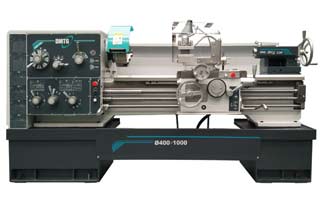Lathe machines are mechanical tools used for shaping workpieces by rotating them against a cutting tool. They have been a fundamental part of machining processes for centuries and continue to be widely used in industries such as automotive, aerospace, and metalworking. Lathe machines offer incredible versatility and precision, making them indispensable in modern manufacturing.
The working principle of a lathe machine involves securing the workpiece to a spindle and rotating it at a controlled speed. A cutting tool is then brought into contact with the rotating workpiece to remove material and shape it according to the desired specifications. The operator can control the speed, depth of cut, and feed rate, allowing for precise and accurate machining.
Faceting Techniques and Lathe Operations for Precision Workmanship
Faceting is the process of cutting a series of symmetrical sides on a workpiece. This creates a level girdle around the piece. To do this, you need to have the right tool and the proper hand pressure. This can be tricky for beginners, so it’s important to practice frequently and to check the quality of your work often.
A lathe’s power, torque, and speed configuration depend on the material and size of the workpiece. Smaller metalworking lathes with lower speeds and power are called hobby or bench lathes, while larger ones can be used for mass production and machining.
A lathe bed supports the headstock, tailstock, and carriage guideways. It also has a cross-slide, compound rest, and tool post that help support, guide, and control the cutting tool. The lathe’s main spindle is equipped with a center, chucks, and faceplates that hold the workpiece. You can use a lathe for a wide range of purposes, including drilling, sanding, knurling, turning, and cutting.
Grooving Techniques and Maximizing Lathe Capabilities for Precision Machining
Grooving is the process of creating a groove in a workpiece by cutting a tool at a constant width across the material. This operation is performed with a cutting fluid to help reduce the impact of the tool and aid chip control.
Lathes are also capable of performing drilling and various milling operations on cylindrical or prismatic workpieces using the C axis. Various tools can be used for this purpose, including grooving tools and drill bits, knurling tools, and tapping tools that cut threads.
When evaluating the purchase of a lathe, shops should consider the size and complexity of the workpieces they plan to turn as well as their expected accuracy and number of parts in each run. This will help ensure that the correct machine is purchased and can accommodate future needs without having to purchase another one. The bed of the lathe is the base that holds the headstock, tailstock, and turret and allows the carriage to move left and right on the bed guideways.
Lathe Machines: Customization and Precision Machining at Your Fingertips
Lathe machines are versatile and customizable to meet specific machining needs. Their monobloc design is a major advantage over other multi-axis machine tools since it minimizes deflection and force distribution between the machining unit and the work-holding device.
In metalworking lathes, metal is removed from a workpiece using a hardened cutting tool fixed to a solid moveable mounting called a chuck or turret. The cutting tool is powered by a drive mechanism that may be powered manually via line shafts or with electric motors on the lathe’s carriage.
The chuck is attached to the headstock’s main spindle and can be a three-jaw or four-jaw chuck. It can be moved left and right on the lathe bed to hold long workpieces.
A lead screw mounted on the tailstock enables movement of the tool post along the X-axis and a cross slide that facilitates movement of the workpiece on the Y-axis. For safety reasons, never loosen the chuck or adjust the tailstock while the lathe is running.






